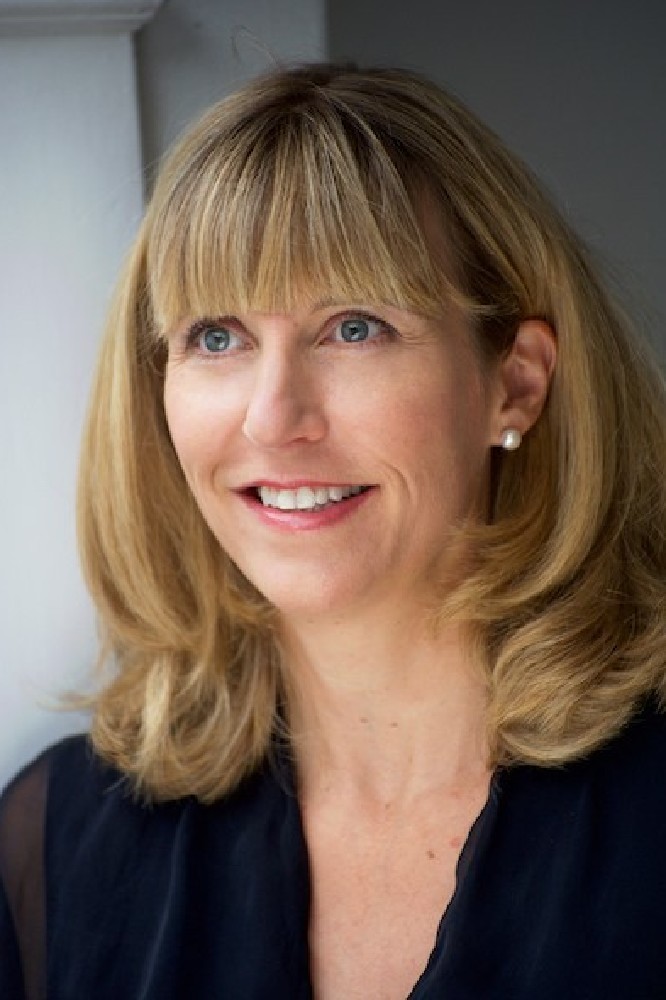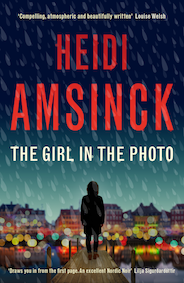
Copenhagen. The home of ’hygge’. Capital of the happiest nation on earth. Right?
Wrong. In my series of novels about reporter sleuth Jensen, her teenage apprentice Gustav and one-time lover Detective Inspector Henrik Jungersen, Copenhagen is a dark place.
Book 2, The Girl in the Photo (Muswell Press), begins on the scene of a grisly murder – a big, old house in an affluent suburb, in which an old lady has tried in vain to protect herself with a fierce Alsatian and a fancy alarm.
When you think of Copenhagen, you may think of canals, ice-cold Carlsberg, bicycles and high-end foodie restaurants. I, on the other hand, think of shadowy wood-panelled rooms, deserted streets, creepy mansions, and the darkness that lurks behind the pretty picture. Why?
I was born in the city, but aside from a brief spell as a trainee newspaper reporter at Denmark’s financial paper, I haven’t lived in Copenhagen since I was six. In fact, I emigrated from Denmark aged twenty-four and have spent almost all my adult life in or around London – my other favourite city.
My memories of Copenhagen were made sometime in my early childhood, during holidays at my paternal grandmother’s home – yep, you guessed it, a big, old house in an affluent suburb.
Anna Amsinck had an Alsatian, a rose garden, old fur coats and a creepy cellar – all of which I have drawn upon shamelessly in my fiction, including My Name is Jensen, the first book in the Jensen series.
In Last Train to Helsingør, my collection of spooky stories written for BBC Radio 4, an antiques dealer gets more than he bargained for when he snatches up a mahogany tallboy from a woman who appears to be in a hurry to offload it. That tallboy stood in my grandmother’s lounge (I was convinced it had a secret compartment) and now belongs to me.
When DI Jungersen steps into the villa in The Girl in the Photo (“too big, too quiet”) I see him in the hallway of Anna’s house, stepping gingerly across her Persian rugs and up the stairs, not wanting to know where the humming of flies is coming from.
My grandmother was a formidable woman who died of old age, a card player (we played for coins kept in an old cigar box), a lover of literature, the driver of a cream Morris Minor with a red leather interior, and the teller of many tales. I adored her, but her, perhaps greatest, gift to me was the freedom to play on my own, a child with an overactive imagination and a love of everything chilling and ghostly.
Growing up, I swallowed whole the work of the Brothers Grimm, Karen Blixen, Bram Stoker, Edgar Allan Poe, Daphne du Maurier, Stephen King and Roald Dahl. I began to write my own short stories as a teenager, only recently moving on to novels.
Like my protagonist Jensen (a surname she shares with almost a quarter of a million Danes) I left Denmark to become a foreign correspondent in London but, unlike her, I never returned.
Jensen finds her homecoming tricky, feeling “like a stranger in her own city”. She is drawn to others looking from the outside in: the teenage loner Gustav, the Israeli coffee seller Liron, and Henning, a retired editor who haunts the corridors of the old broadsheet newspaper Dagbladet where Jensen sometimes works.
Over the years, I have come to love the feeling of belonging neither here nor there, and it is that which powers my fiction. I write in English, the distance of my second language chiming with the ‘otherness’ I now feel when visiting Copenhagen. For the same reason, I choose not to translate my work into Danish myself.
Copenhagen, to me, is at once real and not real, a place remembered and reimagined. I try to bring that atmosphere into the Jensen novels, making the city a character in its own right.
Full disclosure: Copenhagen is wonderful. It is everything the tourist websites tell you and more. It is a stunningly beautiful city, criss-crossed by shimmering water and full of lovely people and amazing art. Go there, if you haven’t been.
But perhaps when you do, you might wonder what lurks behind the city’s beautiful Lego-coloured facades – in its old castles and churches, its dark basements and dusty attics. I know I do.
My Name is Jensen starts with the discovery of the body of a young man under a mound of snow as Copenhagen wakes up after a blizzard. Like Jensen, I always want to see what lies beneath.

The Girl in the Photo by Heidi Amsinck (Muswell Press) published on 28 July 2022